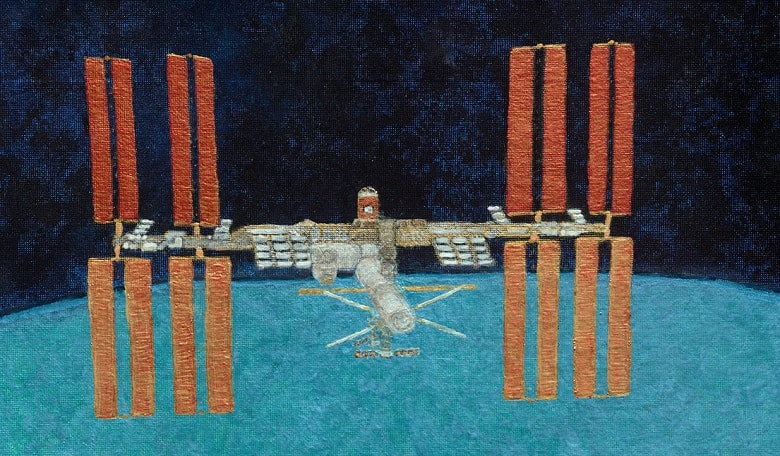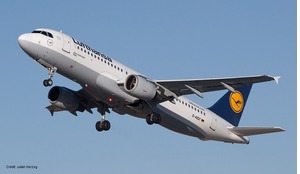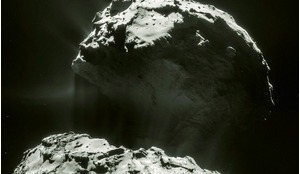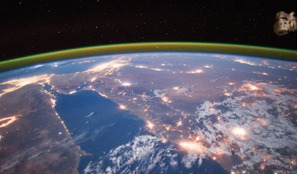The intersection between science and art at a basic level is simply a means of communication and in this edition’s ‘Space for Art’ column we will continue to explore the wonderful relationship between the two.
This ‘communication’ extends from expressing complex scientific data in a way that our brains can best interpret, such as false imaging of astronomical data, to the presentation of fantastic, futuristic ideas in the form of science fiction.
The artistic presentation of science is powerful for both the scientist and the general public alike. For the broader audience, it inspires interest and understanding for those that might otherwise engage with science.
Through ‘Space for Art’, I will provide insight into projects I’m working on, share current events and thoughts linking science and art, and introduce the other related articles presented in ROOM.
As a person who believes in the value of our space programmes and has also seen first hand that these programmes don’t always do the best job at communicating that value, I’m also a believer in using creative and innovative ways to engage, inform and inspire a broader audience.
As I’ve transitioned from astronaut to artist, I have seen the very positive impact that sharing my space mission experience through artwork can have on people. I have seen how my artistic interpretation of the spacecraft I flew or of the views of Earth I was blessed to see from my spacecraft windows can provide people with a new and different perspective on space missions - and on the value to all of us right here on Earth.
In a recent and creative example of ‘engaging the public’ via a combination of art and science, NASA’s Jet Propulsion Laboratory (JPL) commissioned a Seattle-based company, Invisible Creature, to produce a retro-inspired collection of space tourism posters for exotic cosmic destinations.
These posters inspire us to imagine actually travelling to places we can only dream of right now - and they also encourage us to follow along with the current and future missions that will help make these dreams a reality.
The article on the following pages, ‘Why do we need space artists?’ by British space artist David A Hardy, looks at the history of space art and argues that, despite modern digital imagery, there will always be a place for the space artist.
Science fiction as art has always been one of the greatest inspirations and transitions to science fact - the inspiration to believe that nothing is impossible.
And, in future editions of ROOM, I look forward to continuing to explore with our readers the wonderful relationship between science and art.
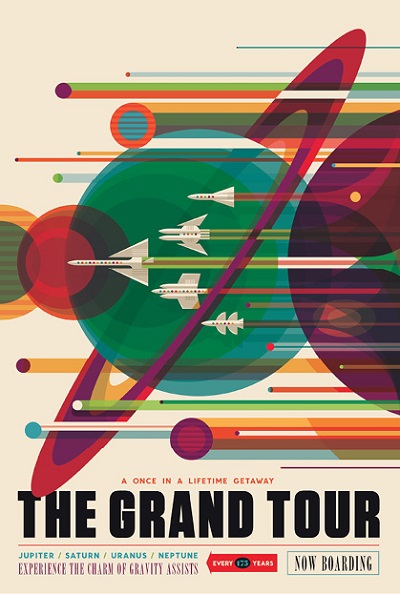 NASA’s Voyager mission took advantage of a once-every-175-year alignment of the outer planets for a grand tour of the solar system. The twin spacecraft revealed stunning details about Jupiter, Saturn, Uranus and Neptune – using each planet’s gravity to send them on to the next destination. Voyager set the stage for such ambitious orbiter missions as Galileo to Jupiter and Cassini to Saturn. Today both Voyager spacecraft continue to return valuable science from the far reaches of our solar system
NASA’s Voyager mission took advantage of a once-every-175-year alignment of the outer planets for a grand tour of the solar system. The twin spacecraft revealed stunning details about Jupiter, Saturn, Uranus and Neptune – using each planet’s gravity to send them on to the next destination. Voyager set the stage for such ambitious orbiter missions as Galileo to Jupiter and Cassini to Saturn. Today both Voyager spacecraft continue to return valuable science from the far reaches of our solar system
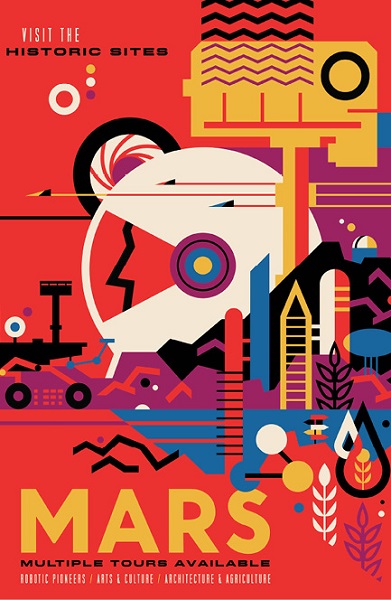 NASA’s Mars exploration programme seeks to understand whether Mars was, is, or can be a habitable world. Missions like Mars Pathfinder, Mars Exploration Rovers, Mars Science Laboratory and Mars Reconnaissance Orbiter, among many others, have provided important information in understanding of the habitability of Mars. This poster imagines a future day when we have achieved our vision of human exploration of Mars and takes a nostalgic look back at the great imagined milestones of Mars exploration that will someday be celebrated as ‘historic sites’.
NASA’s Mars exploration programme seeks to understand whether Mars was, is, or can be a habitable world. Missions like Mars Pathfinder, Mars Exploration Rovers, Mars Science Laboratory and Mars Reconnaissance Orbiter, among many others, have provided important information in understanding of the habitability of Mars. This poster imagines a future day when we have achieved our vision of human exploration of Mars and takes a nostalgic look back at the great imagined milestones of Mars exploration that will someday be celebrated as ‘historic sites’.
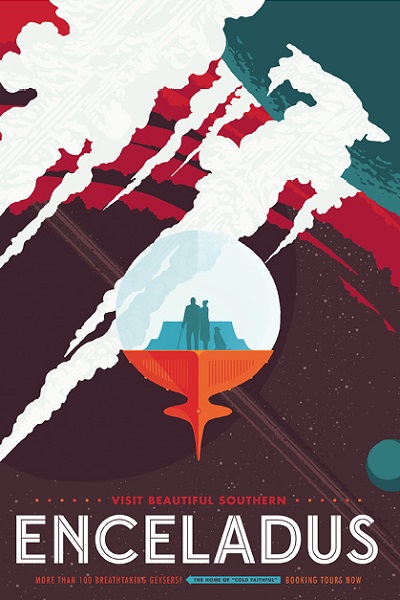 The discovery of Enceladus’ icy jets and their role in creating Saturn’s E-ring is one of the top findings of the Cassini mission to Saturn. Further Cassini mission discoveries revealed strong evidence of a global ocean and the first signs of potential hydrothermal activity beyond Earth – making this tiny Saturnian moon one of the leading locations in the search for possible life beyond Earth
The discovery of Enceladus’ icy jets and their role in creating Saturn’s E-ring is one of the top findings of the Cassini mission to Saturn. Further Cassini mission discoveries revealed strong evidence of a global ocean and the first signs of potential hydrothermal activity beyond Earth – making this tiny Saturnian moon one of the leading locations in the search for possible life beyond Earth





